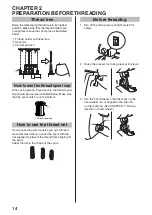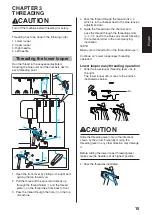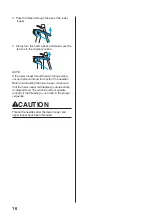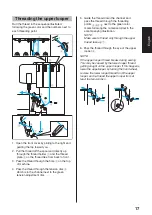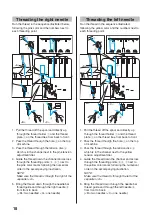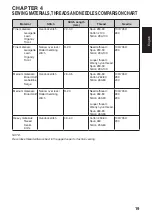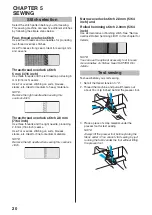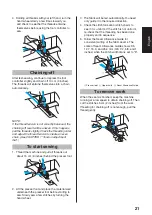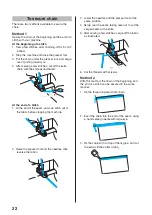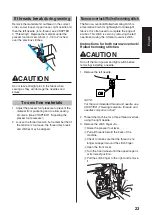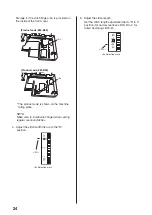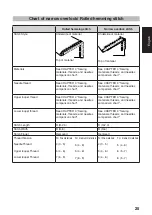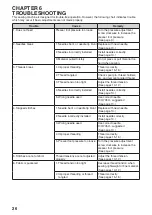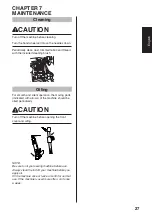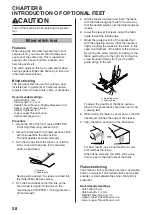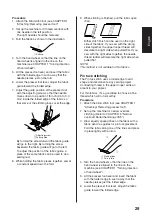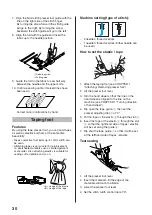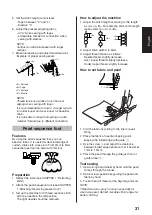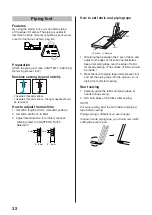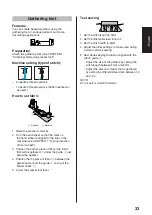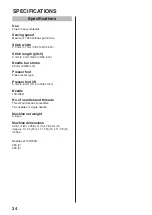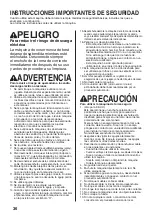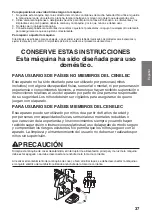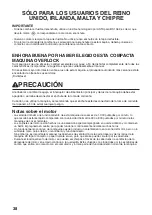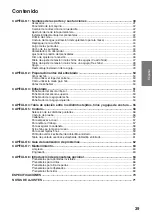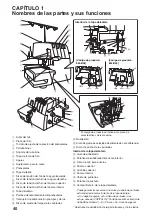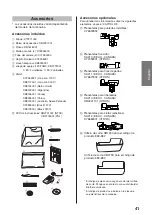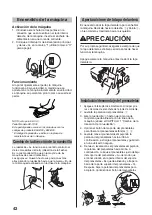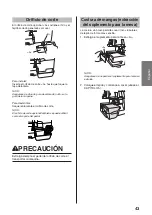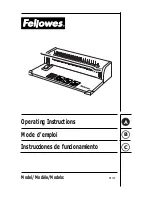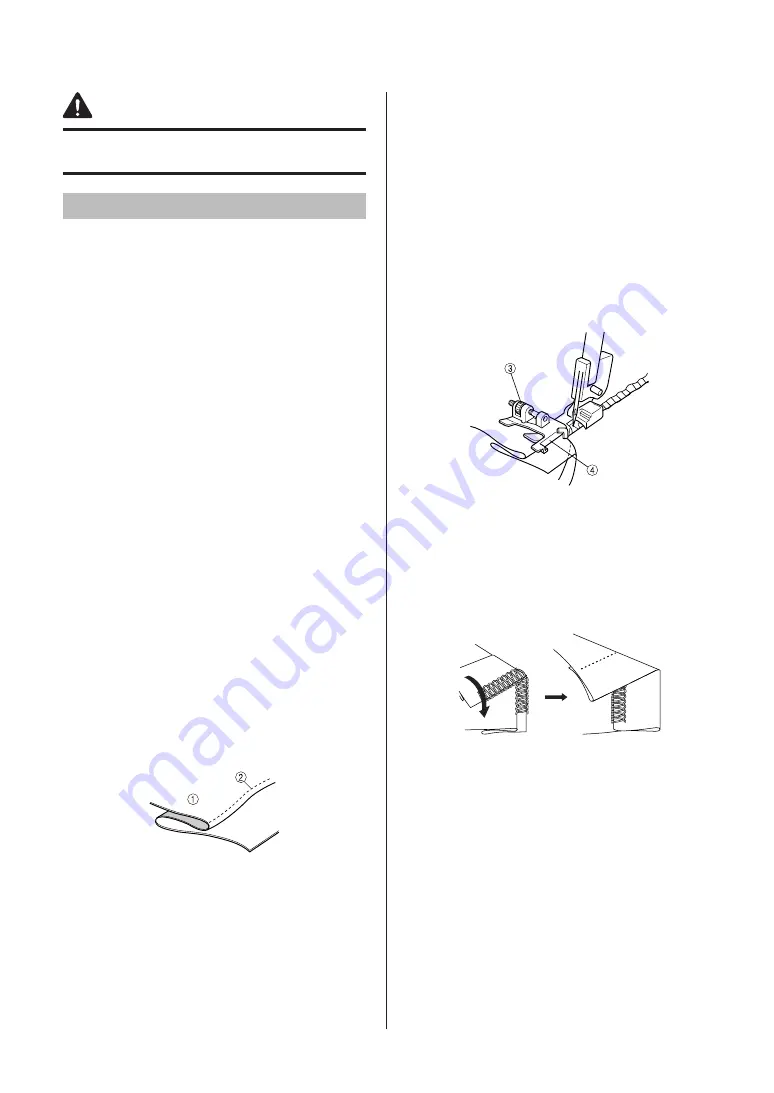
28
CHAPTER 8
INTRODUCTION OF OPTIONAL FEET
5. Lift the presser foot lever and insert the fabric
with the folded edge on the left in such a way
that the needle pierces just the folded edge as
it sews.
6. Lower the presser foot lever, adjust the fabric
guide toward the folded edge.
7. Adjust the guide position of the presser foot
with the adjusting screw so that the needle is
lightly touching the crease in the fabric. In this
case, the thickness of the fabric is the criterion.
By turning the screw forward (toward you) the
fabric guide will go to the right. By turning the
screw backward (away from you) the fabric
guide will go to the left.
3
Adjusting screw
4
Fabric guide
To adjust the position of the fabric guide, a
piece of the same fabric should be used to do
a sewing test.
8. While folding the fabric by hand, sew so that the
needle just catches the edge of the crease.
9. Open the fabric as shown in the illustration.
For best results, use a fine thread in a color
that matches the fabric.
When done correctly, this stitch will be very
hard to see on the right side of the fabric.
Flatlock stitching
The Flatlock stitch is primarily used as a decorative
finish on a project. The finished stitch can look like
a ladder or small parallel lines when the fabric is
pulled flat.
Recommended settings
- Stitch Width: 5 mm
- Stitch Length: 2 - 4 mm
- Needle Thread Tension: 0-3
- Upper Looper Thread Tension: 2-5
- Lower Looper Thread Tension: 6-9
CAUTION
Turn off the machine while replacing the presser
foot.
Blind stitch foot
Features
When using the blind stitch presser foot (multi
purpose foot), you can sew blind stitches and
overlock at the same time. This is ideal when
sewing cuffs, trouser bottoms, pockets, and
hemming skirts etc.
The stitch guide on this foot is also useful when
sewing special stitches like flatlock, pin tuck and
other decorative stitches.
Blind stitching
The blind hem stitch is used for putting a near
invisible hem in garments or home decoration
projects. Use it to hem pants, skirts, or draperies.
Recommended settings
- Stitch Width: 5 mm
- Stitch Length: 3 - 4 mm
- Needle Thread Tension: Slightly Slackened (0-2)
- Upper Looper Thread Tension:
Slightly Tightened (5-7)
- Lower Looper Thread Tension:
Slightly Slackened (2-4)
Procedure
1. Attach the blind stitch foot (see CHAPTER 1
"Attaching/ Removing presser foot").
2. Set up the machine for 3 thread overlock stitch
with one needle in the left position.
The right needle should be removed.
3. Turn the wrong side of the fabric out, fold the
fabric once and then back to the required
width, as illustrated.
1
Reverse
2
Needle path
Sewing will be easier if a crease is ironed into
the folded fabric before sewing.
4. Turn the hand wheel so that the line on the
hand wheel is aligned to the line on the
machine (see CHAPTER 1 "Turning direction
of hand wheel").

